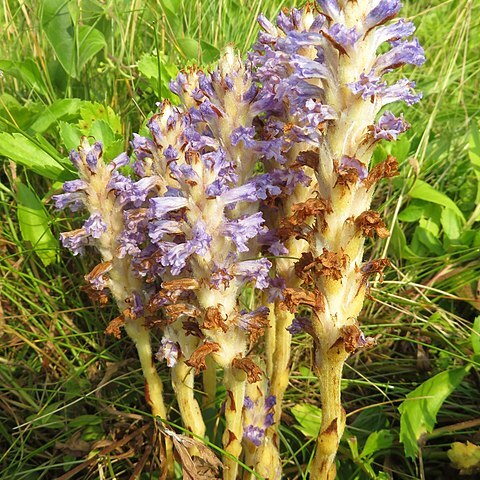A parasitic herb. It grows on Artemisia species. It grows 15-40 cm high. It is fleshy. It appears at the flowering stage. It has a stout, short underground stem. The flowers are bluish-purple. They grow in spikes at the top of the plant. These are 5-10 cm long. Individual flowers have a bract around them.

